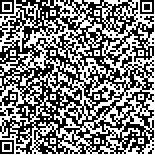下载中心
优秀审稿专家
优秀论文
相关链接
摘要

科学计算的可视化是空间数据场的可视化。标题、矢量、张量是线性电磁系统中定义多维数据的基本参数。从瞬变电磁系统的因果律出发,可以将遥感传感器对电磁波的响应看作是地表电磁场量的映射,像元是记录电磁场量的一种方式。由于电磁场量的线性关联,多波段遥感数字图像可以表示为多维空间数据场量。在多维向量空间中可以对数据场量进行度量、分解和构造向量角度函数。遥感多维空间数据场有效弱信息提取方法则是基于多维空间数据场角度分析展开的。
The visualization of scientific computation is spatial data field visualization. Scalar, vector and tensor quantity are principal parameters to define multi_dimensional data field in linear electromagnetic system. Based on cause and effect rule of instantaneous change electromagnetic system. The response of remote sensing sensor to the electromagnetic field can be regarded as the reflectance of ground electromagnetic field. The pixel is the digital media to record the reflectance. Because the linear connection between ground electromagnetic field and multi_band DNS, the digital image can be expressed as multi_dimensional spatial data field. In multi_dimensional linear vector space, values of data field can be calculated, differentiated, analyzed and the angle function also can be formulated in the space. The mapping of useful weak feature in remote sensing data field is also carried out based on angle analysis.

